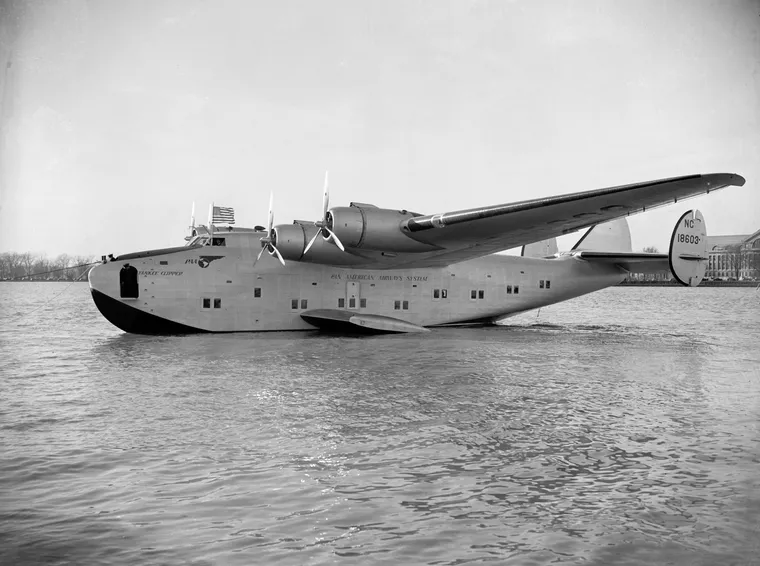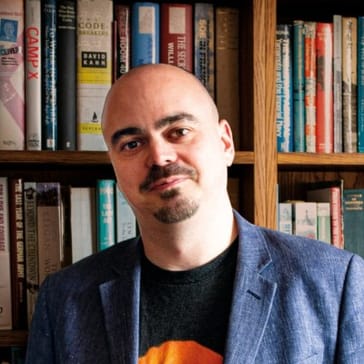We continue our series looking at one of the most stunning, yet near-forgotten, acts of skill in civilian aviation history: the round-the-world flight of the California Clipper in December 1941. You can find the first part of this series here.
The British seemed to do everything politely, Ford mused as they waited in the drawing room of the British Residence in Trincomalee. They probably even apologised during invasions. Maybe that was how they’d got away with doing so many of them.
The arrival of the California Clipper in British territory had gone far better than their encounter with Dutch fighters in Indonesia – their brief evasion of a Japanese submarine excepted. This was thanks to the Dutch, who had managed both to provide them with British radio frequencies and get word out that the California was coming.
What Ford hadn’t expected was that this would mean a formal dinner was on the cards.
The message had arrived shortly after they had landed on 21st December 1941. It was from Sir Andrew Caldecott, the governor of Ceylon. It informed Ford that the governor was fascinated by their attempt to get home to America the long way round and wished them the best of luck.
To Ford’s delight, the message confirmed that the governor had ordered the California be treated as a British military aircraft and granted any and all support and supplies she needed for her journey, at no cost to her crew or Pan Am. This included unlimited access to the thing they needed most of all – military-grade aviation fuel. The governor would also ensure that preparations were made at Karachi in India, and beyond that in British-controlled Bahrain, for the California’s next two legs.
This was fantastic news, although Ford quickly realised the support came with a few more conditions than implied. Alongside the message was an invitation for Ford to dine with the governor, his wife and select guests that evening.
Only if Ford felt he could spare the time, of course. While his aircraft was being repaired.
And refuelled.
For free.
This was the reason Ford now found himself, tugging at the collar of his least-dirty Pan Am uniform, in the drawing room of the British Residence. Alongside him, equally uncomfortable, was his navigator Rod Brown. Ford’s plan to defer the whole thing to Jack Poindexter, who was technically the most senior Pan Am staff member on board the flight had been scuppered when Poindexter reminded him how he had ended up accompanying them to begin with. Poindexter wasn’t meant to be here. He had only signed on for the one-day leg to Hawaii and had been stuck with them, on this desperate lunge around the globe, ever since Pearl Harbor. He didn’t have a full uniform with him.
Ford reluctantly accepted the logic and forced Rod Brown to join him instead. Poindexter didn’t have a formal uniform with him. Brown was naïve enough to admit that he did.
Ford would later say that he found the whole experience surreal. They were technically still in a war zone – or at least somewhere that could become one at any time – yet here, unlike in the Dutch East Indies, daily formalities and routines were still being observed. A full, formal dinner was not a situation he was sure he knew how to handle.
Luckily, they were spared it. Shortly after arriving, the governor’s wife, Lady Caldicott breezed into the room with an apology. The demands of war had called her husband back to the office. The dinner was cancelled.
Both men breathed a sigh of relief. Before they could depart, however, she did ask them sheepishly if they would do something first. There was one person in the house who had heard their story and was desperate to meet them. Her young son John.
This was how, in the middle of a world-wide war and their own fragile flight into the unknown, Ford and Brown found themselves sat in front of a fire, telling their tale to a wide-eyed young boy. Lady Caldicott had hoped they would spare him a few minutes. It was well past his bedtime, after all. As the night drew on, however, the Pan Am men showed no sign of being bored by the boy’s barrage of questions about the California Clipper, her crew and their adventures so far. Cocoa was quietly provided. Bedtime discretely ignored.
Eventually, when John was barely able to stay awake, time was called. As the two men made to leave, the governor’s wife thanked them again. All she had hoped was that they’d let John shake their hands. By being so generous with their time and attention they had done him – and her – an incredible kindness.
What she perhaps never realised was the kindness that she had in turn done for them, at the time they needed it most. Ford, Brown and the rest of the California’s crew had never asked to undertake this journey. They were ordinary men, in extraordinary times. What she had granted them, in the middle of those times, was a small measure of peace. A reminder of why they were doing this at all. Not just to get the California herself back to America, but to see their own families again.
A close shave
It was Christmas Eve, 1941, before the California was ready to leave Trincomalee on the next leg of her flight to Karachi and then Bahrain. They had wanted to spend as much time as they dared servicing her after their long flight on non-military grade fuel across the Indian Ocean. Not least, to try and drain the remains of that from her system.
As Ford pushed the throttles to maximum for take-off, the engines stuttered. A sign her tanks weren’t entirely clear of the old fuel. Once in the air, the loud bangs associated with engine misfires started again. From the engineer’s station, Swede Rothe continued to carefully monitor and manage the fuel levels. The hope was that the lower-quality fuel that they hadn’t managed to drain from her tanks would quickly clear the California’s fuel system. By about half an hour into the flight, this seemed to be working and the banging began to subside.
Then it all went wrong, fast.
Ford was just about to hand over control of the plane to one of the other pilots when a large explosion ripped through the air throwing him out of his seat. The California lurched hard to the left and began losing height rapidly. First Officer Johnny Mack, who’d managed to stay in the co-pilot’s seat despite the violent change in direction, wrestled to bring her back under control before she hit the ocean below.
“Number three has lost oil pressure” Rothe shouted from his station as Mack, now aided by Ford again, struggled to level the California out.
John Parrish, another crew member, was ordered up into the navigation dome to try and work out what had happened. It was immediately obvious. Number three engine had blown. It now hung uselessly on the wing, its propellor feathering as it trailed oil and fire into the morning sky.
The explosion could have taken out the entire plane, but the California proved her toughness once again. Gently, Ford and Mack swung their wounded aircraft around and slowly limped back to Trincomalee on her three remaining engines.
Far from home
After a careful landing, the crew of the California found themselves back in Trincomalee. They were greeted once again by the British who immediately set to work, alongside the crew, fixing the wounded plane. They were able to use the spare engine the crew luckily had the forethought to bring.
It soon became clear that the repairs would take more than a day, and so it was that the crew found themselves spending Christmas in Sri Lanka as guests of the RAF. Together, they sang, drank and raised toasts to families far, far away.
Jack Poindexter smiled and laughed along with them. But he felt the pang of distance more than most. Unlike the rest of the California’s crew, his days of long flights had been over before this accidental circumnavigation attempt even started. He'd left them behind already and retired happily to a desk, in part because he had begun to feel the yawning absence in his heart created by the long trips away.
As the night grew darker, and the songs sadder and more wistful, all he could think of was his wife. The rest of the crew had at least had time to prepare for an extended absence from their families – albeit not one quite this long – and their families also had time to prepare. Poindexter and his wife had not enjoyed that luxury.
Here he was, on the wrong side of the world, armed only with a couple of spare shirts and the memory of apologising to her. The last time he’d heard her voice was when he’d rung her to say that he would be home late for dinner that evening.
Wartime secrecy meant that he had not been able to talk to her since. None of them had. Pan Am had at least made sure that she knew that he was still alive. but as far as she, or any of their families knew, they were still trapped in Auckland. That was bad enough, but if they didn't make it? If the worst happened? If the California failed them or the crew failed her?
Then his wife would wake up to a sudden knock on the door and the shocking news that he was dead or missing, somewhere classified or simply unknown.
At least some of these fears he shared with the rest of the crew and their new RAF friends. Some he perhaps didn’t. Whatever the full extent of the conversation was that Christmas evening, in an RAF mess somewhere in Ceylon, Jack Poindexter and the others swore an oath: they would make it back.
Karachi next and Bahrain beyond. From there, on to Khartoum and a big overland flight to Leopoldville on the other side of Africa. Then the biggest challenges of all, crossing the Atlantic to Brazil. That single leg would require setting a new world record for the a plane like the California, in terms of distance traveled in a single flight. After that they would be back in Pan Am territory. Easy hops from there, via Trinidad, to New York on the East Coast.
And when he got to New York, Jack Poindexter had already decided that he was getting on the first train he could find headed west. Because his journey would not be over yet.
His wife was waiting for him in Los Angeles. This wasn’t done until he got there. Until he put his own keys into his own front door and shouted happily to his wife that he was home.
This series concludes next week — and our Premium and Business subscribers will receive an exclusive early release. Subscribe today to be one of them, and to support all our independent aviation journalism, including historical series like this one.


